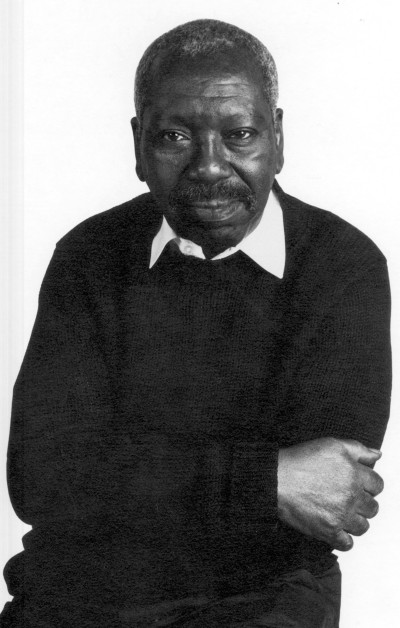Jacob Lawrence (Jacob Lawrence)

Jacob Lawrence was born in 1917 in Atlantic City, New Jersey. He was thirteen when his family, including his sister and brother, moved to New York City. Lawrence was introduced to art shortly after that, when their mother enrolled him in classes at an arts and crafts settlement house in Harlem, in an effort to keep him busy. The young Lawrence often drew patterns with crayons. In the beginning, he copied patterns of his mother’s carpets; one of his art teachers noted great potential in Lawrence. After dropping out of school at sixteen, Lawrence worked in a laundry and a printing plant. He continued with art, attending classes at the Harlem Art Workshop, taught by the noted African-American artist Charles Alston. Alston urged him to attend the Harlem Community Art Center, led by the sculptor Augusta Savage. Savage secured Lawrence a scholarship to the American Artists School and a paid position with the Works Progress Administration, established during the Great Depression by the administration of President Franklin D. Roosevelt. Lawrence continued his studies as well, working with Alston and Henry Bannarn, another Harlem Renaissance artist, in the Alston-Bannarn workshop.
On July 24, 1941, Lawrence married the painter Gwendolyn Knight, also a student of Savage. They were married until his death in 2000. In October 1943 (during the Second World War), Lawrence enlisted in the United States Coast Guard and served with the first racially integrated crew on the USCGC Sea Cloud, under Carlton Skinner. He continued to paint and sketch while in the Coast Guard. After years in New York, in 1970 Lawrence and Knight moved to the Pacific Northwest, where he had been invited to be an art professor at the University of Washington. They settled in Seattle. Some of his works are displayed in the university’s Meany Hall for the Performing Arts and in the Paul G. Allen Center for Computer Science & Engineering. Lawrence’s painting, Theatre, installed in the main lobby of Meany Hall, was commissioned by the University in 1985 for that space.
Throughout his lengthy artistic career, Lawrence concentrated on exploring the history and struggles of African Americans. He often portrayed important periods in African-American history. The artist was 21 years old when his series of paintings of the Haitian general Toussaint L’Ouverture, who led the revolution of the slaves that eventually gained independence, was shown in an exhibit of African-American artists at the Baltimore Museum of Art. This impressive work was followed by a series of paintings of the lives of Frederick Douglass and Harriet Tubman, as well as a series of pieces about the abolitionist John Brown.
Lawrence was 23 when he completed the 60-panel set of narrative paintings entitled Migration of the Negro, now called the Migration Series. The series was a portrayal of the Great Migration, when hundreds of thousands of African Americans moved from the rural South to the North after World War I, and showed their adjusting to Northern cities. It was exhibited in New York at the Museum of Modern Art, and brought him national recognition. In the 1940s Lawrence was given his first major solo exhibition at the Museum of Modern Art in New York City, and became the most celebrated African-American painter in the country. Shortly after moving to Washington state, Lawrence did a series of five paintings on the westward journey of African-American pioneer, George Washington Bush. These paintings are now in the collection of the State of Washington History Museum. Lawrence illustrated an adaptation of Aesop’s Fables for the University of Washington Press in 1997. Lawrence taught at several universities. He continued to paint until a few weeks before his death in June 2000 at the age of eighty-two. His last commissioned public work, the mosaic mural New York in Transit, was installed in October 2001 in the Times Square subway station in New York City.
His work is in the permanent collections of numerous museums, including the Metropolitan Museum of Art, the Museum of Modern Art, the Whitney Museum, the Phillips Collection, the Brooklyn Museum, the National Gallery of Art and Reynolda House Museum of American Art. In May 2007, the White House Historical Association (via the White House Acquisition Trust) purchased Lawrence’s The Builders (1947) for $2.5 million at auction. The painting hangs in the White House Green Room. When Lawrence died on June 9, 2000, the New York Times described him as “One of America’s leading modern figurative painters” and “among the most impassioned visual chroniclers of the African-American experience.” His wife, artist Gwendolyn Knight Lawrence, died several years later in 2005. Jacob Lawrence made 319 artworks in his life. Before he died, he and his wife set up the Jacob and Gwendolyn Knight Lawrence Foundation. It serves as the official Estates of both artists. It maintains a searchable archive of nearly 1,000 images of their work. The U.S. copyright representative for the Jacob and Gwendolyn Knight Lawrence Foundation is the Artists Rights Society.
Born
- September, 07, 1917
- USA
- Atlantic City, New Jersey
Died
- June, 09, 2000
- USA
- Seattle, Washington



